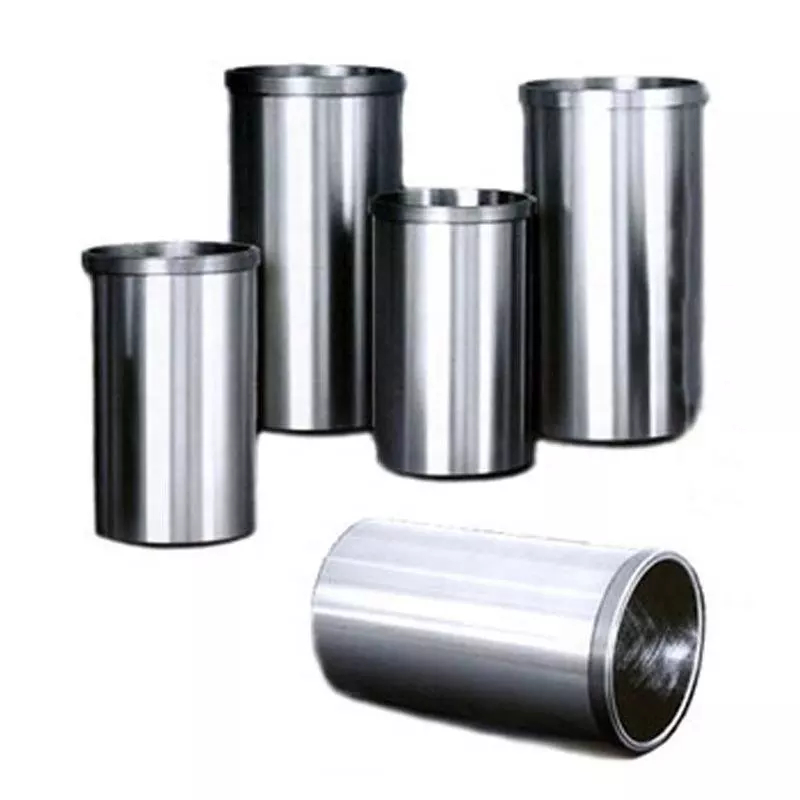The cylinder liner is the abbreviation of the cylinder liner. It is embedded in the cylinder barrel of the cylinder block and forms the combustion chamber together with the piston and the cylinder head.
Cylinder liner is divided into two categories: dry cylinder liner and wet cylinder liner. The cylinder liner whose back does not contact the cooling water is called a dry cylinder liner, and the cylinder liner whose back is in contact with the cooling water is a wet cylinder liner. The thickness of the dry cylinder liner is thin, the structure is simple, and the processing is convenient. The wet cylinder liner is in direct contact with the cooling water, so it is beneficial to the cooling of the engine and to the miniaturization and weight reduction of the engine. This article will describe several categories of causes of dry cylinder liner failure.
1. The inner wall of the cylinder liner is pulled
Features: uneven and irregular edge groove marks in the cylinder liner, sometimes visible piston metal welded to the cylinder wall.
Reason: The reasons for pulling the cylinder are complex, and there are design reasons, such as the selection of materials, the determination of the size of the gap, whether the installation of the device is appropriate, whether the structural arrangement is reasonable, whether the surface roughness is suitable, and the arrangement of lubrication and cooling. Whether it is perfect or not, from the perspective of management, it may be caused by the following reasons!
(1) Poor cylinder lubrication:
The cylinder lubricating oil is insufficient or the oil supply is interrupted, and the metal is directly contacted and the cylinder is pulled. The reasons for the poor cylinder lubrication are: the oil in the oil pan is too little or the quality of the oil is too poor, the temperature of the diesel engine is too high, or the piston rings (mainly the oil ring) ) damage or failure, etc.
(2) The running-in is not sufficient:
To get an effective running-in in the shortest possible time, the running-in time and load distribution must be considered. Even if the running-in is too low for a long time, the running-in cannot be completed, and if the high-load operation is rushed, it will cause the cylinder to pull. Therefore, During the running-in period of the diesel engine, it should be noted that the amount of oil injection should be appropriately increased during the running-in period; after the piston ring is replaced, it should run under low load for a period of time; after the piston and cylinder liner are replaced, the running-in should be carried out before increasing the load operation.
(3) Poor cooling:
Poor cooling will lead to excessive temperature of the cylinder and piston, and poor lubrication; poor cooling will cause the piston and the cylinder liner to overheat and over-expand and deform, losing the original normal clearance and pulling the cylinder. The reasons for poor cooling are: insufficient discharge pressure of the cooling water pump, insufficient water supply Insufficient or interrupted; the cooling water chamber is rusted or dirty; the water contains air bubbles, which accumulate in the cooling chamber and are not released, causing air resistance; the water quality is too dirty and the water temperature is too high.
(4) The piston ring is not working properly:
If the opening clearance is too small, the piston ring will break; if the space between the sky and the ground is too small, the piston ring will be stuck; too much carbon deposits will cause the piston ring to stick to the ring groove and lose its elasticity, resulting in fracture or gas leakage; the opening clearance is too large or the wear is serious , Air leakage occurs. The leakage of gas destroys the lubricating oil film and makes the surface temperature too high. After the piston ring is broken, the fragments are easy to fall into the piston cylinder, causing the cylinder to pull and bite the cylinder.
(5) Burning inferior fuel oil:
Incomplete combustion brings more combustion residues; after-combustion is serious, which increases exhaust gas temperature, and technical measures are not taken in time; cylinder lubrication base value is not suitable. The cylinder is pulled due to overheating expansion or poor alignment of moving parts.

.jpg)